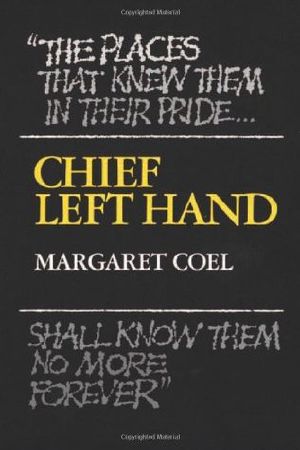Chief Left Hand · Southern Arapaho

- Authors
- Coel, Margaret
- Publisher
- University of Oklahoma Press
- Tags
- biography , mystery , test , history
- ISBN
- 9780806120300
- Date
- 1981-01-01T00:00:00+00:00
- Size
- 1.80 MB
- Lang
- en
This is the first biography of Chief Left Hand, diplomat, linguist, and legendary of the Plains Indians. Working from government reports, manuscripts, and the diaries and letters of those persons—both white and Indian—who knew him, Margaret Coel has developed an unusually readable, interesting, and closely documented account of his life and the life of his tribe during the fateful years of the mid-1800s.
It was in these years that thousands of gold-seekers on their way to California and Oregon burst across the plains, first to traverse the territory consigned to the Indians and then, with the discovery of gold in 1858 on Little Dry Creek (formerly the site of the Southern Arapaho winter campground and presently Denver, Colorado), to settle.
Chief Left Hand was one of the first of his people to acknowledge the inevitability of the white man’s presence on the plain, and thereafter to espouse a policy of adamant peacefulness —if not, finally, friendship—toward the newcomers.
Chief Left Hand is not only a consuming story—popular history at its best—but an important work of original scholarship. In it the author:
Clearly establishes the separate identities of the original Left Hand, the subject of her book, and the man by the same name who succeeded Little Raven in 1889 as the principal chief of the Southern Arapahos in Oklahoma—a longtime source of confusion to students of western history;
Lays to rest, with a series of previously unpublished letters by George Bent, a century-long dispute among historians as to Left Hand’s fate at Sand Creek;
Examines the role of John A. Evans, first governor of Colorado, in the Sand Creek Massacre. Colonel Chivington, commander of the Colorado Volunteers, has always (and justly) been held responsible for the surprise attack. But Governor Evans, who afterwards claimed ignorance and innocence of the colonel’s intentions, was also deeply involved. His letters, on file in the Colorado State Archives, have somehow escaped the scrutiny of historians and remain, for the most part, unpublished. These Coel has used extensively, allowing the governor to tell, in his own words, his real role in the massacre. The author also examines Evans’s motivations for coming to Colorado, his involvement with the building of the transcontinental railroad, and his intention of clearing the Southern Arapahos from the plains —an intention that abetted Chivington’s ambitions and led to their ruthless slaughter at Sand Creek.